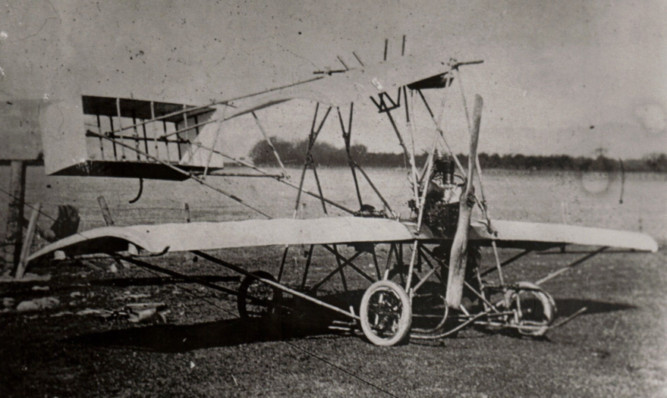Everyone knows the Wright brothers made the first powered flight. Or did they? A new book claims a young man from Dundee may have flown the world’s first aeroplane.
On December 17 1903 Wilbur and Orville Wright flew their homemade aeroplane nearly 900 feet across the Ohio countryside. The four flights the brothers made that day were the first sustained, heavier-than-air powered flights in history.
Or so the most popular version of history goes.
The respected Smithsonian National Air and Space Museum is home to the Wright flyer, the famous aircraft the brothers took to the skies in. In order to gain custody of the famous aircraft, however, The Smithsonian signed a contract with Orville Wright’s estate agreeing never to recognise anyone else was the first to fly.
The Wright estate may have felt threatened by Gustav Whitehead, a German-American migrant who claimed to have carried out a controlled, powered flight on August 14 1901 in Bridgeport, Connecticut two years before the Wright brothers.
The flight was reported in the Bridgeport Sunday Herald local newspaper. Around 30 years later, several people questioned by a researcher claimed to have seen that or other Whitehead flights.
In March last year the aviation bible Jane’s All the World’s Aircraft accepted Whitehead’s claim although The Smithsonian continues to dispute this. Now it transpires another, much more local character may also have beaten the Wright brothers to the first powered flight.
Preston Watson, the son of a Dundee wholesaler, apparently made a powered flight at Errol in August 1903 four months before the Wright brothers’ first flight.
Born into relative prosperity, Watson studied physics at Queens College in Dundee and began building his own aircraft.
Eyewitness accounts, including some published in The Courier, indicate that he achieved a series of powered “hops” in the summer of 1903.
Preston Watson was killed in a flying accident in 1915, at the age of 35, and is buried in Dundee’s Western Cemetery. His claim to the first powered flight did not surface until nearly 30 years after his death, however.
Retired hospital consultant Alastair Blair, from Fife, has penned a book, The Pioneering Flying Achievement of Preston Watson. Written in conjunction with engineer Alistair Smith, it draws together all the evidence still existing on the man who claimed to have made the first powered flight.
Alastair explains: “The whole story of the inventive young pioneer aviator Preston Watson would simply have been submerged with the passage of time had it not been for the fact that his elder brother, James, who was involved in some of Preston’s earliest endeavours, felt that he had to honour his late brother’s memory by assembling the available information on his aeronautical activities.”
In 1953 James attempted to establish that Preston had flown before the Wright brothers.
This claim had cold water poured on it by the leading aviation scholar of the time, Charles Gibbs-Smith.
“Mr Gibbs-Smith was very scathing in his appraisal of Watson’s claim,” Alastair continues. “He seemed to think that someone without a great deal of education and who came from the back of beyond could never have accomplished anything in the field.”
Alastair’s book re-examines all the available evidence, sifting through photographs, letters, papers, newspaper cuttings and more in order to paint as full a picture as possible.
It also investigates the construction of each of Watson’s planes, looking at the availability of the engines he claims to have used.
“Unfortunately James Watson lost much of his correspondence with his brother so there is not enough evidence to establish definitively whether he beat the Wright brothers,” Alastair concludes.
Regardless of whether he achieved the first powered flight, Alastair says Preston Watson deserves to be recognised as a pioneering genius in the field of aeronautics.
“He built three aircraft, all of similar design, improving it with each successive plane. His real stroke of genius was the invention of the so-called ‘rocking’ or ‘parasol’ wing device for solving the problem of lateral stability and banking turns.
“The Wrights used a more cumbersome system of wing-warping in their first, and subsequent, aircraft. At the same time, he devised a control system using a single ‘stick’ control for up-down and turn-and-bank which remains fundamentally the system in use today. It is very likely that he was the first to do so, and therefore would have been ahead of the Wright Brothers in this respect.
“Whether or not he achieved the first powered flight, he was a very clever inventor.”
The Pioneering Flying Achievement of Preston Watson is launched at Dundee Museum of Transport on December 5 from 7-8.30pm.
